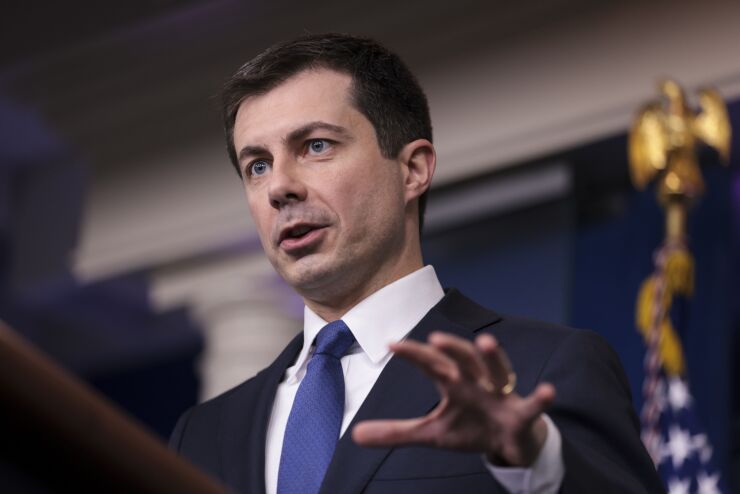The Department of Transportation announced $2.4 billion in funding for 122 rail projects in 41 states and the District of Columbia, though concerns about the future of rail and other infrastructure funding are rising.
”Through the Bipartisan Infrastructure Law, we’re funding rail infrastructure projects that create jobs and expand workforce development, reduce costs for consumers, and directly benefit communities across the country,” U.S. Transportation Secretary Pete Buttigieg said Tuesday in announcing the funding.
“Each project advances a future where our supply chains are stronger, passenger rail more accessible, and freight movement safer and more efficient.”
Bloomberg News
The money is flowing through the Federal Railroad Administration by way of the Consolidated Rail Infrastructure and Safety Improvements Program and will be used for upgrading track, replacing or rehabilitating aging bridges, expanding rail connections at ports, and adding modern locomotives to fleets.
CRISI grants are the only federal grant program prioritizing smaller, short line railroads.
“FRA is investing more than ever in communities nationwide, reversing a half-century of federal underinvestment in America’s rail network and delivering the world-class rail our citizens deserve,” said FRA Administrator Amit Bose.
The Springfield Rail Improvements Project, which is ultimately focused on bringing higher speed rail connections between St. Louis and Chicago was among the big winners, netting $157 million for track improvements and new grade crossing separations.
The $475 million project has been underway since 2010 and has been held up by an effort to move rail lines to a new corridor in Springfield that’s seven blocks away from their current location. The construction includes building new overpasses and underpasses while also adding an updated transit center.
Last December, the DOT temporarily denied a chunk of funding for SRIP because the new transit center couldn’t be completed in time to meet a construction deadline.
Although the BIL is bipartisan by name its implementation has attracted scrutiny from Congress regarding its future and efficiency.
In
In
While the Biden Administration touts billions in infrastructure spending on nearly 300 rail projects and dozens of passenger rail corridor concerns are rising about an investment gap that could worsen after the election.
A
Per the report, “Regardless of the election’s outcome, U.S. infrastructure is anticipated to encounter considerable political challenges. These may include the reduction or elimination of tax-exempt municipal bonds, a crucial tool for infrastructure financing.”
The report crunches numbers from the American Society of Civil Engineers, the Congressional Budget Office, and the U.S. Chamber of Commerce to determine that even after factoring in the inflow of funds from the Inflation Reduction Act and the Bipartisan Infrastructure Law there is an annual shortage in investment of $174 billion per year.
The ASCE’s infrastructure report card currently rates the nation’s railroad infrastructure at a solid B, the same level it’s held since 2017.
Transit, levees, wastewater, schools, roads, parks, inland waterways, hazardous waste, dams, and aviation are currently at the D level.
